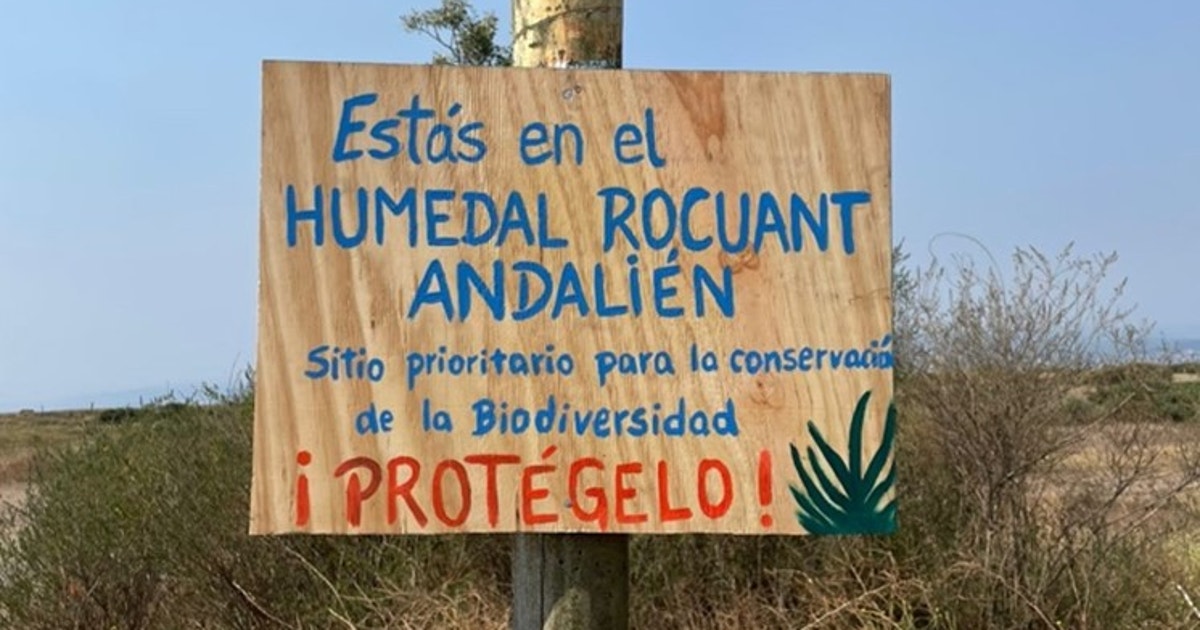Thousands of shorebirds from the Nearctic region travel more than 10,000 kilometers to Chile’s extensive coastline in search of rest, food, and breeding grounds. These species spend most of their time widely separated spatially, making them vulnerable to rapidly changing environmental conditions in the ecosystems.
One of these birds is the American Oystercatcher (Haematopus palliatus), a species present from North America to the southernmost tip of South America. In Chile, from Arica to Chiloé, with lesser presence towards the Strait of Magellan. Its habitat is strictly coastal—areas with extensive sandy beaches, rocks, dunes, and marshes.
They reproduce for the first time at the age of three or four years, the eggs are brownish-gray with dark spots, and incubation is carried out by both sexes for 24–28 days. Both parents feed the young for at least two months after hatching.
Unfortunately, the species has been listed as Near Threatened by the Wild Species Classification Regulation (RCE) in Chile, which monitors its conservation status.
Isla de los Reyes Rocuant Beach: a key link for the conservation of the Common Shelduck
Within the Rocuant Andalién Wetland System, located in the Biobío Region of Chile, is the Isla de los Reyes Beach. Nine kilometers long, with sand and primary dunes, this place is dominated by various species that provide perfect conditions for feeding and nesting of shorebirds.
This beach is currently considered an Important Bird Area (IBA) because of the Threatened or Near Threatened species it contains, including the Common Shelduck.
In this place, the situation is complex not only for this bird but also for the other species that inhabit it. This is because throughout its range it faces various threats, such as the use of motorized vehicles on the beaches or coastal plains where there are nesting sites; the presence of feral and owned dogs; the destruction of breeding habitat due to construction near the coast; and the effects of climate change.
Early and voluntary work, the key
Given the urgency of taking early conservation actions to help reverse the decline of shorebirds in the area, between 2019 and 2021, Audubon Americas, together with CODEFF (Comité Nacional Pro Defensa de la Flora y Fauna) and with the collaboration of the Ministry of Environment’s GEF Coastal Wetlands Project, developed the Conservation Action Plan for the Rocuant Andalién Wetland System in the Biobío Region of Chile.
The Action Plan identified eight conservation targets, including migratory shorebirds, as well as their direct threats. Four lines of action and 100 conservation actions were also proposed.
In addition, and within the framework of the project “Integration of Shorebird Conservation in Chile II” carried out by Audubon Americas, the National Audubon Society’s “Coastal Stewardship Program” was adapted and implemented for Chile.
Among the main activities suggested to be carried out during the American Oystercatcher breeding season, the manual identifies the following: training of volunteers, teachers, and children; monitoring of the breeding colony; and environmental education for visitors.
For this, the work of the volunteers was indispensable. They installed three symbolic perimeter fences with a total length of 762 meters. In addition, children and adults painted various signs with informative messages to protect the site and the birds.
The result? The hard work of these 40 volunteers protected 213 breeding pairs, 426 eggs, 66 chicks, and 35 fledglings[1].
Today more than ever, it is necessary to work toward a global vision of critical changes in shorebird habitat to advance recovery and conservation. To accomplish this, we must identify conservation and planning priorities that will drive the development of large-scale conservation initiatives and policies critical to migratory species.
[1] These activities were carried out with Fundación Bandada, a local NGO dedicated to nature conservation, and focused on birds and their habitats. They also received complementary funding from the GEF Coastal Wetlands of the Chilean Ministry of the Environment and the support of the Pilpilén Working Group – made up of representatives from the public, private, and civil society sectors.

